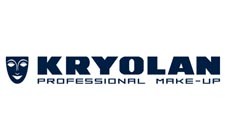Makeup brushes are an essential tool in any beauty routine, helping to achieve flawless application and
professional-looking results. However, with regular use, makeup brushes accumulate dirt, oil, bacteria, and
leftover product, which can not only affect the performance of the brushes but also compromise the overall
quality of your makeup application. Regularly cleaning your makeup brushes is crucial not only for the longevity
of the brushes but also for maintaining healthy skin. In this comprehensive guide, we’ll walk you through the
step-by-step process of how to wash makeup brushes effectively.
Why Cleaning Makeup Brushes Matters
Before delving into the how-to’s of cleaning makeup brushes, it’s important to understand why this routine is so
crucial. As you use your brushes, they pick up not only makeup but also the natural oils from your skin, dead
skin cells, and environmental pollutants. Over time, this accumulation can lead to clogged pores, breakouts, and
even skin infections. Additionally, dirty brushes can alter the colour and texture of your makeup products,
affecting the final look you’re trying to achieve.
How Often Should You Clean Your Brushes
The frequency of cleaning your makeup brushes depends on how often you use them. As a general rule of thumb, it’s
recommended to clean your brushes at least once a week if you use them daily. For brushes that are used with
cream or liquid products, such as foundation or concealer brushes, they might need to be cleaned more often to
prevent product build-up.
Step-by-Step Guide to Washing Makeup Brushes
-
Step 1: Gather Your Supplies
Before you start the cleaning process, gather all the necessary supplies. You’ll need:
- Gentle Cleanser: Use a mild soap or a dedicated brush cleanser to clean your brushes. Harsh chemicals
can damage the bristles over time. - Warm Water: You’ll need warm water for rinsing the brushes.
- Cleaning Surface: Find a clean towel or a silicone brush cleaning pad to gently scrub the brushes.
- Container: Prepare a container or a bowl to hold the warm water and soap mixture.
- Brush Holder: After cleaning, your brushes should be dried with the bristles facing downward to
prevent water from seeping into the ferrule (the metal part that connects the bristles to the handle).
A brush holder or an improvised setup can work for this purpose.
- Gentle Cleanser: Use a mild soap or a dedicated brush cleanser to clean your brushes. Harsh chemicals
-
Step 2: Prepare the Cleaning Mixture
Mix a small amount of gentle cleanser with warm water in the container. Swirl the mixture to create a
soapy solution. -
Step 3: Wet the Brushes
Hold one brush at a time under lukewarm water, being careful to avoid wetting the handle. The water should
be warm enough to help break down the makeup and oils on the bristles. -
Step 4: Cleanse the Brushes
Dip the wet brush into the soapy mixture. Gently swirl the brush in the mixture and use your fingers to
work the soap into the bristles. Be careful not to submerge the entire brush as this can lead to water
getting trapped in the ferrule. -
Step 5: Rinse Thoroughly
Once you’re satisfied with the cleansing, rinse the brush under running water until the water runs clear
and there are no soap suds left. Make sure to rinse both the bristles and the ferrule. -
Step 6: Repeat if Necessary
For brushes that are heavily stained or haven’t been cleaned in a while, you might need to repeat the
cleansing process to ensure all makeup residue is removed. -
Step 7: Gently Remove Excess Water
After rinsing, use a clean towel to gently squeeze out excess water from the bristles. Be gentle to avoid
damaging the bristles. -
Step 8: Reshape the Brushes
While the bristles are damp, gently reshape them with your fingers to restore their original form. This
step is particularly important for maintaining the effectiveness of the brush. -
Step 9: Dry the Brushes
Hang the brushes upside down with the bristles facing downward to ensure that no water enters the ferrule.
A brush holder or an improvised setup using clips and a hanger can serve this purpose. Allow the brushes
to air dry completely before using them again.
Additional Tips
- Avoid Quick Drying Methods: While it might be tempting to speed up the drying process using
a hairdryer, direct heat can damage the bristles and lead to shedding. It’s best to let the brushes air
dry. - Spot Cleaning: In between deep cleans, you can use a quick-drying brush cleaner to remove
excess makeup from your brushes. This is particularly useful when you’re switching between different shades
during a makeup application. - Regular Maintenance: Make it a habit to inspect your brushes regularly for signs of wear and
tear. Replace brushes that have become frayed or have lost their shape. - Separate Brushes: If you have brushes with both natural and synthetic bristles, it’s a good
idea to wash them separately. Natural bristles are more delicate and require specific care.
In Conclusion
Cleaning your makeup brushes is an essential practice that should be an integral part of your beauty routine.
Regularly washed brushes not only improve the longevity and performance of your tools but also contribute to
healthier skin by preventing bacterial build-up. With the step-by-step guide provided here, you have all the
information you need to effectively clean your makeup brushes and maintain a flawless makeup application every
time. So, set aside a little time each week to pamper your brushes, and your skin will thank you for it!

















